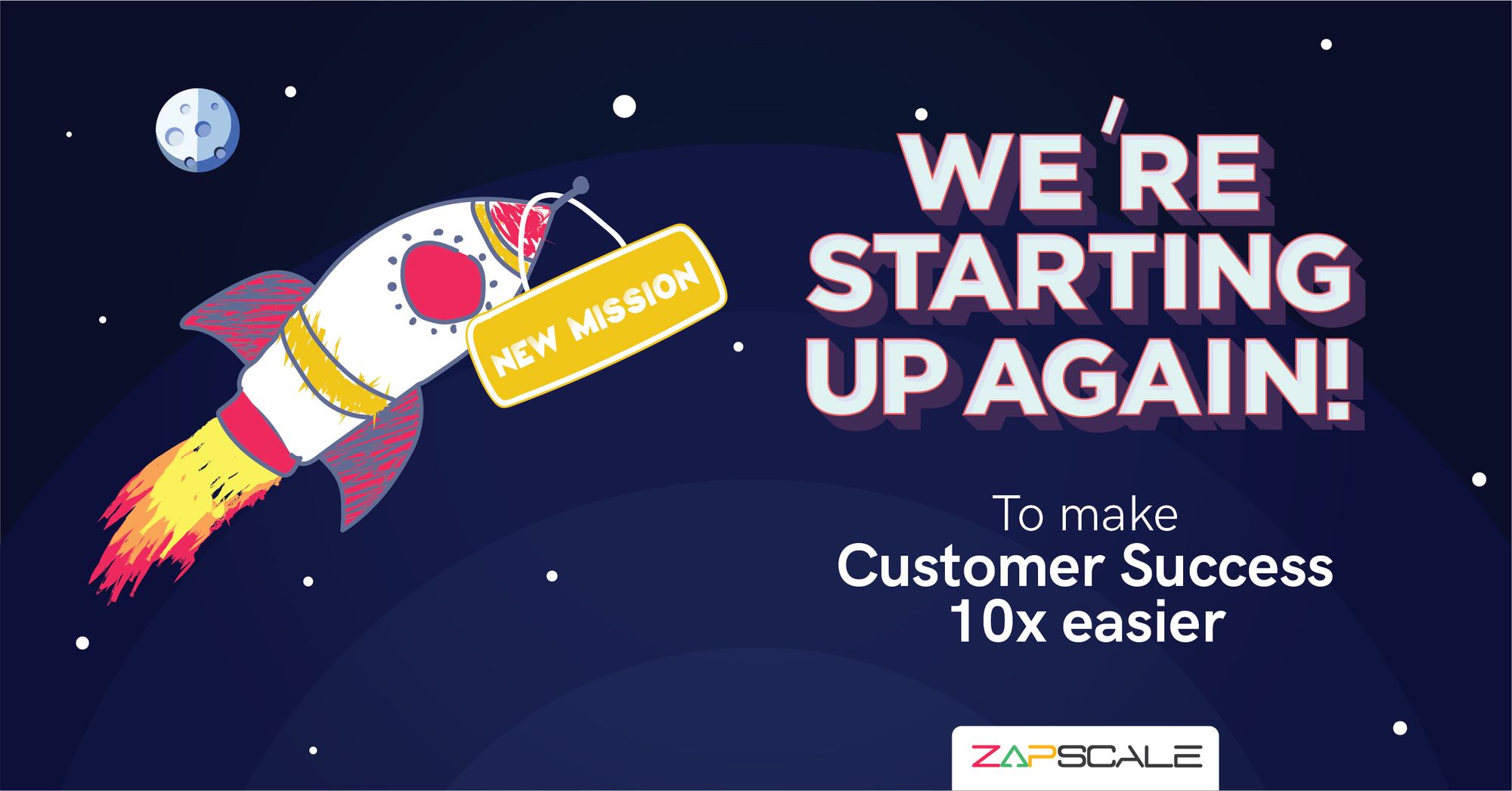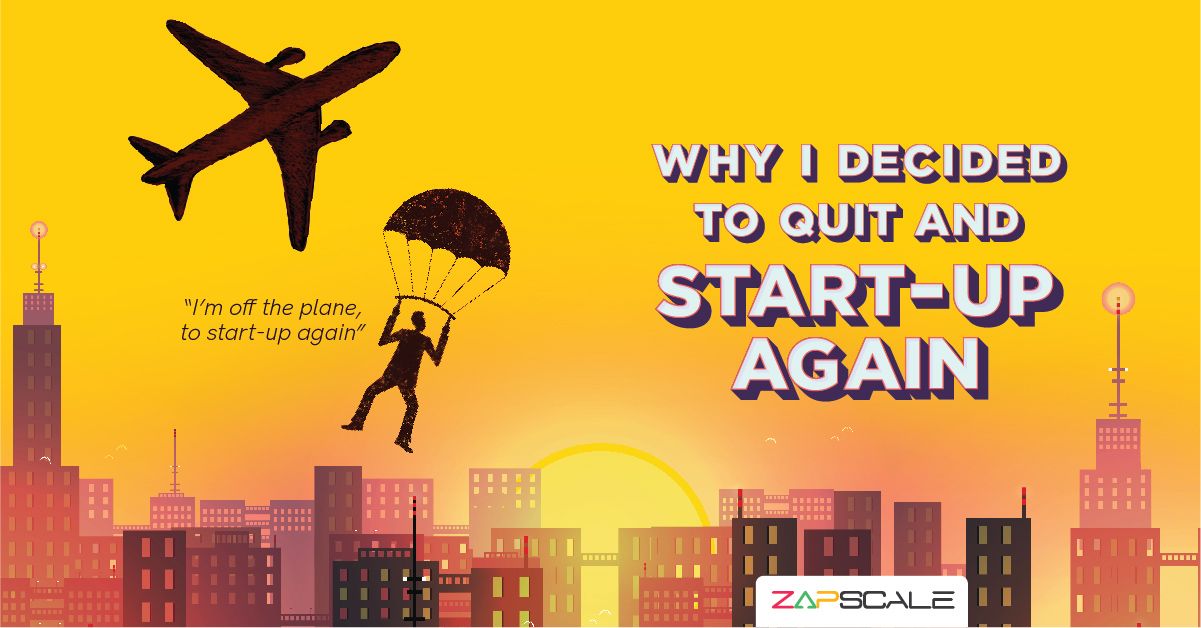CATEGORY > Founder Stories
Starting up again, to make Customer Success easy!

I still remember the day when we got our 1st customer in my last startup. It was a lovely rainy day in November 2013 and it came with a terrific feeling – it felt absolutely amazing; almost akin to the 1st kiss. And after 2 years of honeymoon – they churned. I felt crushed, hollowed, gutted; almost akin to a breakup.
This started a 6-year-long tug of war between me trying to understand why my customers threatened to churn and why some of them actually did churn. In fact, before I sold my 1st B2B SaaS startup in 2019, we had seen 40+ churn threats from our customers and we managed to douse the flame in 30 cases. We lost only 10 customers over a 5-year period, giving us an enviable 1.5% YoY churn performance (industry average is 10% – 15% YoY churn).
Every time a customer threatened to churn, I would mount a deep data dig to find evidence of their displeasure with the data. Funny story – there was always data that I had missed. With time and patience that ran over 5 years, we were able to create a customer success health profile that helped us deliver the fantastic 1.5% YoY churn figure.
Here are the top Customer Success mistakes I was doing when I was running my last start-up:
1. I relied on simple and seductive, gut-feel techniques:
I used to define customer health through very simple if-then-else circuits.
For instance, I used to believe that a customer is healthy if they logged into my product 3 time a week, logged less than 5 bugs a month, and had at least 3 email exchanges in a quarter.
Was this the right approach? At the time it seemed so. But, did I ever run any correlation test of all churned customers and examined if they were logging in at least 3 times per week? Absolutely not!

So, I actually did not have a factual base that if a customer logged in less than 3 times a week, they would churn. So even though it looked like I had a seemingly logical health metric, it had no factual legs.
I had none at the beginning.
It took us 5 years of effort to identify 40 odd objective customer health KPIs by sourcing data from our product usage, ticketing system, CRM, subscription and payment system, feature request system, and customer communications.
2. I never measured my product’s customer outcomes
My customers were my customers because my product promised them business outcomes. If I were to understand my customers’ happiness, I should have looked at this very fundamental aspect.
A business outcome is the end result of completing one or more use cases on your product. If a customer gets repeatable and reliable business outcomes, they will forgive a clunky UI design, a few bugs here and there, and even poor after-sales support.
Let’s assume your product promises that customers can do faster airline ticket booking. What would be your customer outcome metric? You would want to ensure that the booking use case takes no more than say 60 seconds. Just a successful booking is not the desired customer outcome – a fast under 60-second booking is.
A customer who booked 5 tickets from your platform last week where each booking took 2 minutes would churn and go back to their favorite booking website because your product didn’t deliver the speed. Yes, you had high usage, lesser bugs – everything all right, but you failed to deliver the customer outcome of speed!

I was not.
Later, we had around 10 objective KPIs that defined the product-driven business outcomes to measure the value addition we were doing for our customers.
3. I never measured my users’ health
In the early days, I was not measuring user-level health.
Users make up customers. Users are decision-makers. Users are influencers.
Without measuring user health, a key piece of my customer success was lacking. And yet, I had missed this key insight.

I didn’t have that.
After years of effort, we ended up with some 20 objective KPIs to measure each user’s health.
4. In the name of customer success, I built an elaborate task system and not an intelligence system
Again, in the early days, I had built a whole list of tasks for my CS team. “Do this, do that, send this email, call them, meet them…”
The CS system didn’t deliver any clear data-driven actionable moves. The reason was our customer health calculation was simple seductive gut-feel oriented and we had no inkling of customer outcomes and user health. So, the tasks generated on top of these fuzzy KPIs had a lot of activity, but no real value addition. It was death by tasks!

I didn’t have that.
With the 40+ objective KPIs, came the discipline to see customer health in 40 dimensions. That created repeatable playbooks to handle poor health for each of the 40 KPI dimensions. The lesson was clear, your health KPIs extend to your CS playbooks. Go light on the health KPIs and your CS playbooks cannot be bulletproof.
5. I missed customer-centricity by a mile
At the outset, all my CS issues and tasks, etc. were seen only by my CS team. My leadership of the product team, sales team, marketing team, finance team, DevOps team, training team, support team, etc. had no idea of the CS activities.
The problem is that the CS team could not solve all problems themselves. They needed help from other teams. However, the other teams had no idea about the customers' and the users’ health. This created a huge gap in building a customer-centric business where all the other department’s leadership didn’t quite empathize with the CS concerns.

I sure didn’t.
Over the years, customer health was exposed to all the department leadership folks. That generated an org-wide appreciation for the customer concerns.
I sold my 1st startup in 2019. As fate would have it, we all got bogged down in our homes in 2020-2021 as a global pandemic raged on. In 2021, I and my co-founders quit our jobs and started building ZapScale – a customer success platform.
The objective is to make CS 10x simpler by productizing all the learnings from my last B2B SaaS startup. I intend to build a CS tool that has:

In the next few weeks, I am going to write about how we are planning to solve all the above-mentioned issues. You can look forward to these editions:
● Learn from Churn: I would be recounting my learnings from various customer churn threats in this weekly series with actual data and insights.
● I would also be publishing one blog in a month about:
1. Customer and User Health – I will explain how can we deeply look into health without relying on gut feel
2. CS math and stats – I would take up the nerdy bit of CS math/stats, etc for all the 50 KPIs. This is hardcore nerd stuff and if you’re into numbers and data, you will surely love it!
Join me on this interesting journey. Let’s make Customer Success 10x simple!
ABOUT THE AUTHOR
Popular from Founder Stories
Quality Content,
Straight To Your Inbox!
Subscribe for the latest blogs, podcasts, webinars, and events!

Write a Blog
If you have experience in CS and
a flair for writing, we’d love to
feature you.
Write to us on
hello@zapscale.com



